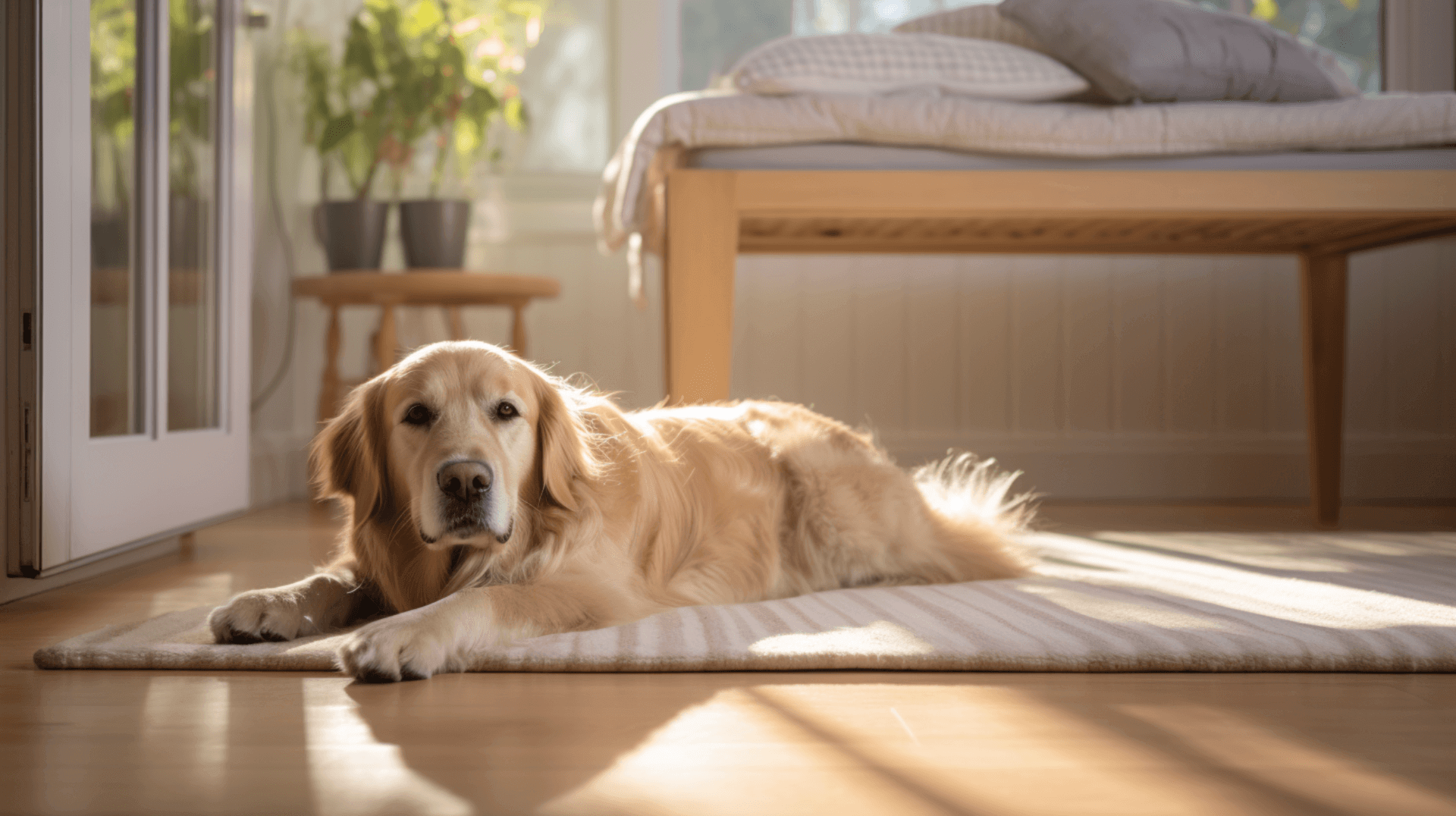Introduction: Understanding Pet Damage on Wooden Floors
Pet damage on wooden floors is a common problem that can affect both homeowners and business owners. It refers to any damage caused by pets to wooden floors, including scratches, dents, gouges, and discoloration. Scratches and dents are the most common types of pet damage and can be caused by claws, nails, and teeth. Gouges are deeper and more serious, often resulting from pets digging or scratching at the floor. Discoloration is another consequence of pet damage, typically caused by pet urine.
The common causes of pet damage on wooden floors include scratching, digging, and running or jumping on the floor. Pets may scratch or dig at the floor to mark their territory or relieve boredom. Running and jumping can also lead to dents and scratches. Additionally, pet urine and droppings can cause discoloration and staining.
The potential consequences of pet damage on wooden floors can vary in severity. Minor scratches and dents may only affect the appearance of the floor, while deep gouges can weaken the structure. Discoloration from pet urine can be difficult to remove and may require professional intervention. If left unchecked, pet damage can lead to costly repairs or even the need for floor replacement.
For homeowners and business owners, understanding the causes and consequences of pet damage is crucial in order to prevent it from occurring and to take appropriate measures to protect wooden floors.
Identifying the Vulnerabilities of Your Wooden Floor

Identifying the vulnerabilities of your wooden floor is an important step in protecting it from pet damage. Different types of wooden floors are more or less susceptible to pet damage, depending on their construction and finish. Hardwood floors are generally more durable than softer woods, such as pine, and are less likely to be damaged by pets. Floors with a glossy finish are also more resistant to pet damage than those with a matte finish.
Assessing the vulnerability of your wooden floor to pet damage can be done by inspecting it for signs of wear and tear. Look for scratches, dents, gouges, and discoloration, as these are all signs of pet damage. Additionally, check for any loose boards or nails, as these can be a sign of structural damage.
There are several factors that contribute to the vulnerability of wooden floors to pet damage. The type of wood, finish, and construction all play a role in determining the floor’s susceptibility to pet damage. Additionally, the size and activity level of the pet can also affect the likelihood of pet damage. For example, larger and more active pets are more likely to cause damage than smaller, calmer pets.
By understanding the types of wooden floors that are more susceptible to pet damage, assessing the vulnerability of your floor, and considering the factors that contribute to pet damage, you can take appropriate measures to protect your wooden floor from pet-related wear and tear.
Prevention: Best Practices for Protecting Wooden Floors from Pet Damage
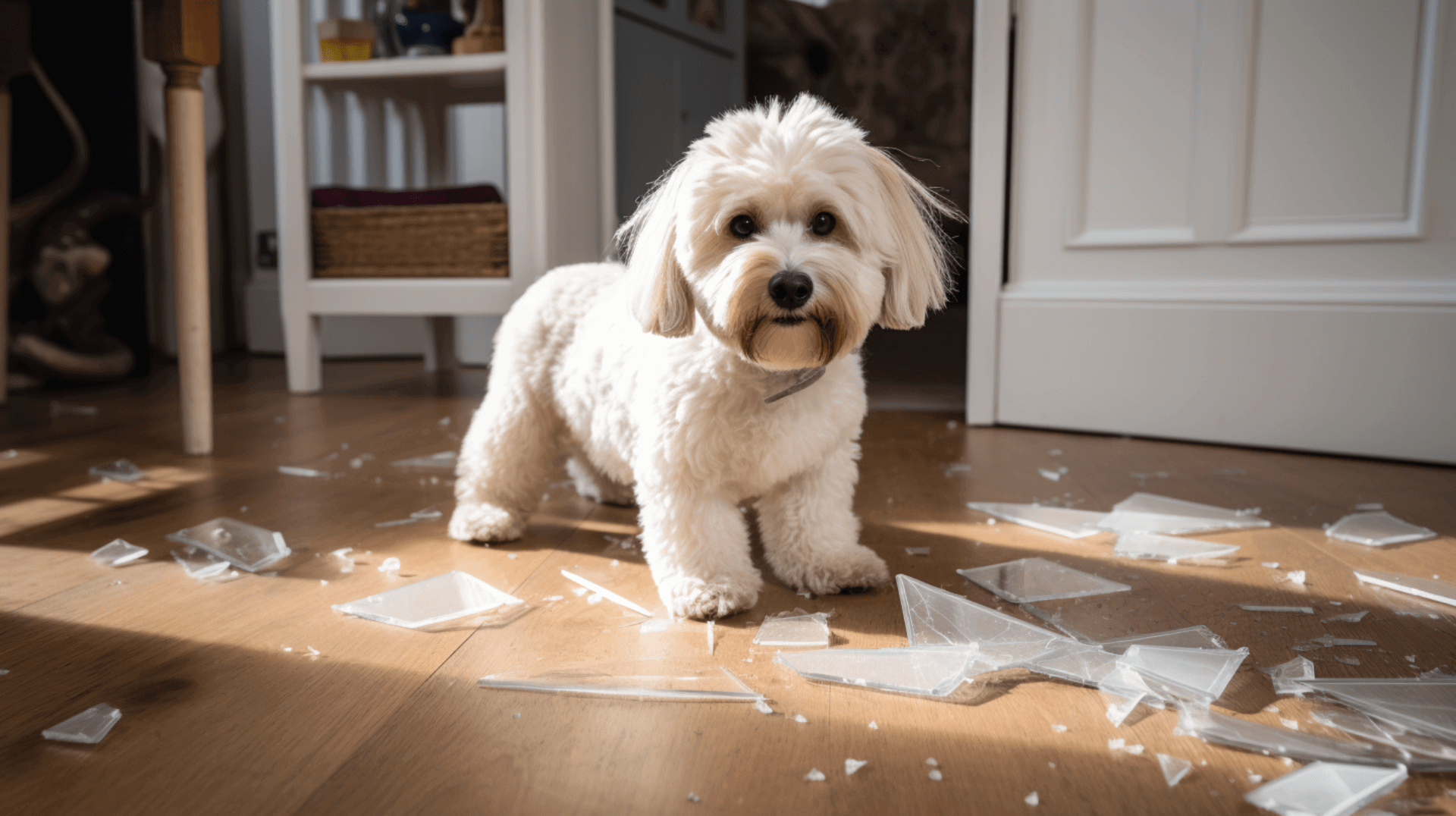
The original answer remains relevant and does not need to be refined based on the new context provided. The best practices for preventing pet damage on wooden floors, such as training pets, using protective coverings, and regular maintenance, still apply. The additional context about using walk-off mats, wiping up spills, and removing scuffs can be considered as part of regular maintenance practices. The information about materials and products that can be used to protect wooden floors from pet damage can be included as supplementary information in the original answer.
Training Your Pet: An Effective Strategy for Floor Protection

Training your pet is an effective strategy for protecting wooden floors from pet damage. By training your pet, you can prevent them from scratching, digging, and running or jumping on the floor, which can cause damage. Additionally, training can help reduce the risk of pet urine and droppings staining the floor.
The most effective techniques for training pets to avoid damaging wooden floors include positive reinforcement and reward-based training. Positive reinforcement involves rewarding desired behaviors with treats or praise, while negative reinforcement involves providing verbal reprimands or time-outs when the pet misbehaves.
When training pets to protect wooden floors, several factors should be considered. The age, breed, and activity level of the pet can all affect the effectiveness of the training. Younger pets may require more frequent and consistent training, while older pets may need reminders of the rules. Certain breeds may be more prone to damaging wooden floors, and more active pets may require closer supervision.
In addition to training, other measures can be taken to protect wooden floors from pet damage. Using walk-off mats at entryways can help prevent dirt and debris from being tracked onto the floor. Wiping up spills promptly can prevent moisture from seeping into the wood and causing damage. Additionally, removing scuffs and scratches as soon as they appear can help maintain the appearance of the floor.
Regular maintenance is also important in preventing pet damage. Inspecting the floor regularly for signs of wear and tear and addressing any issues promptly can help prevent further damage. It is also recommended to follow the manufacturer’s guidelines for cleaning and maintenance to ensure the longevity of the wooden floor.
By implementing these best practices, considering the individual characteristics of your pet, and maintaining regular upkeep, you can effectively train your pet to protect your wooden floors and ensure their longevity and appearance.
Choosing the Right Protective Coating for Your Wooden Floor
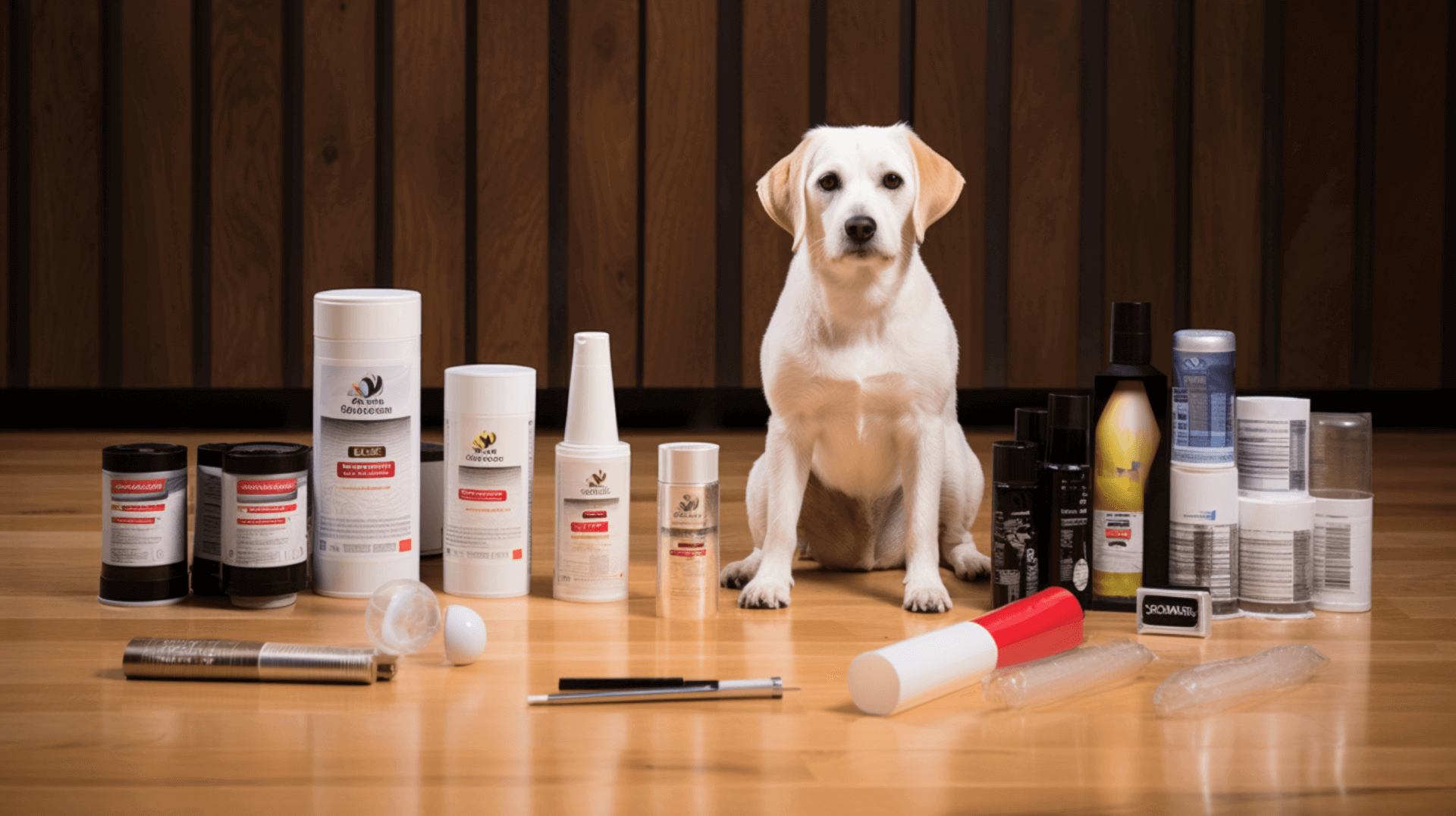
Choosing the right protective coating for your wooden floor is an important step in protecting it from pet damage. There are several types of protective coatings available for wooden floors, including polyurethane, wax, and oil-based finishes. Polyurethane is the most common type of protective coating and is available in both water- and oil-based varieties. Wax finishes are more durable than polyurethane and provide a glossy finish, while oil-based finishes are more resistant to scratches and provide a natural look.
When choosing the right protective coating for your wooden floor, it is important to consider your pet and floor type. Hardwood floors are more durable than softer woods, such as pine, and may require a more durable finish. Additionally, certain breeds of pets may be more prone to damaging wooden floors, and more active pets may require a more durable finish.
It is also important to assess the condition of your floor’s foundation. Any openings or hazards should be appropriately cordoned/barriered, and the area weighted U-value must be calculated in accordance with the conventions in the current version of BR443 conventions for calculating. To improve the thermal performance of a suspended timber floor by adding extra insulation to a floor, it will need to comply with the relevant building regulations.
By considering your pet and floor type, as well as the durability and finish of the protective coating, you can choose the right coating to effectively protect your wooden floor from pet damage. Additionally, addressing any structural issues and following building regulations will ensure the longevity and performance of your wooden floor.
Application of Protective Coating: A StepbyStep Guide

To properly apply a protective coating on your wooden floor and ensure its effectiveness and longevity, follow these refined step-by-step guidelines:
- Prepare the floor: Start by cleaning the floor thoroughly to remove any dirt or debris. This will ensure a smooth surface for the protective coating to adhere to. Allow the floor to dry completely before proceeding.
- Take safety precautions: Wear protective clothing, including gloves, goggles, and a face mask, to protect yourself from fumes and chemicals. Ensure the area is well-ventilated by opening windows and doors. Keep pets and children away from the area during the application and drying process.
- Apply the coating: Follow the manufacturer’s instructions for the specific protective coating you are using. Apply the coating in thin, even layers using a brush or roller. Make sure to cover the entire floor, including the edges and corners. Allow each layer to dry completely before applying the next coat.
- Daily maintenance: Dry mop the floor daily with a properly treated dust mop. For floors with heavy use, consider sweeping up to three times per day. Use walk-off mats at all doorways to prevent dirt and debris from being tracked onto the floor. Promptly wipe up spills or any other moisture on the floor to prevent damage.
- Address scuffs and marks: Remove heel marks and scuffs using a floor finish or a wood finish approved by the flooring manufacturer. This will help maintain the appearance of the floor and prevent further damage.
- Additional considerations: It is important to assess the condition of your floor’s foundation. Any openings or hazards should be appropriately cordoned/barriered, and the area weighted U-value must be calculated in accordance with the conventions in the current version of BR443 conventions for calculating. To improve the thermal performance of a suspended timber floor by adding extra insulation to a floor, it will need to comply with the relevant building regulations. To achieve the required U-value, there are a range of materials available on the market that are appropriately certified for use as insulation under timber floors. It is important to check the manufacturer’s technical information to ensure the material is suitable for use as UFI.
By following these refined guidelines and taking the necessary safety precautions, you can properly apply a protective coating to your wooden floor, ensuring its durability and protection against pet damage.
Repairing Pet Damage: Effective Methods and Techniques
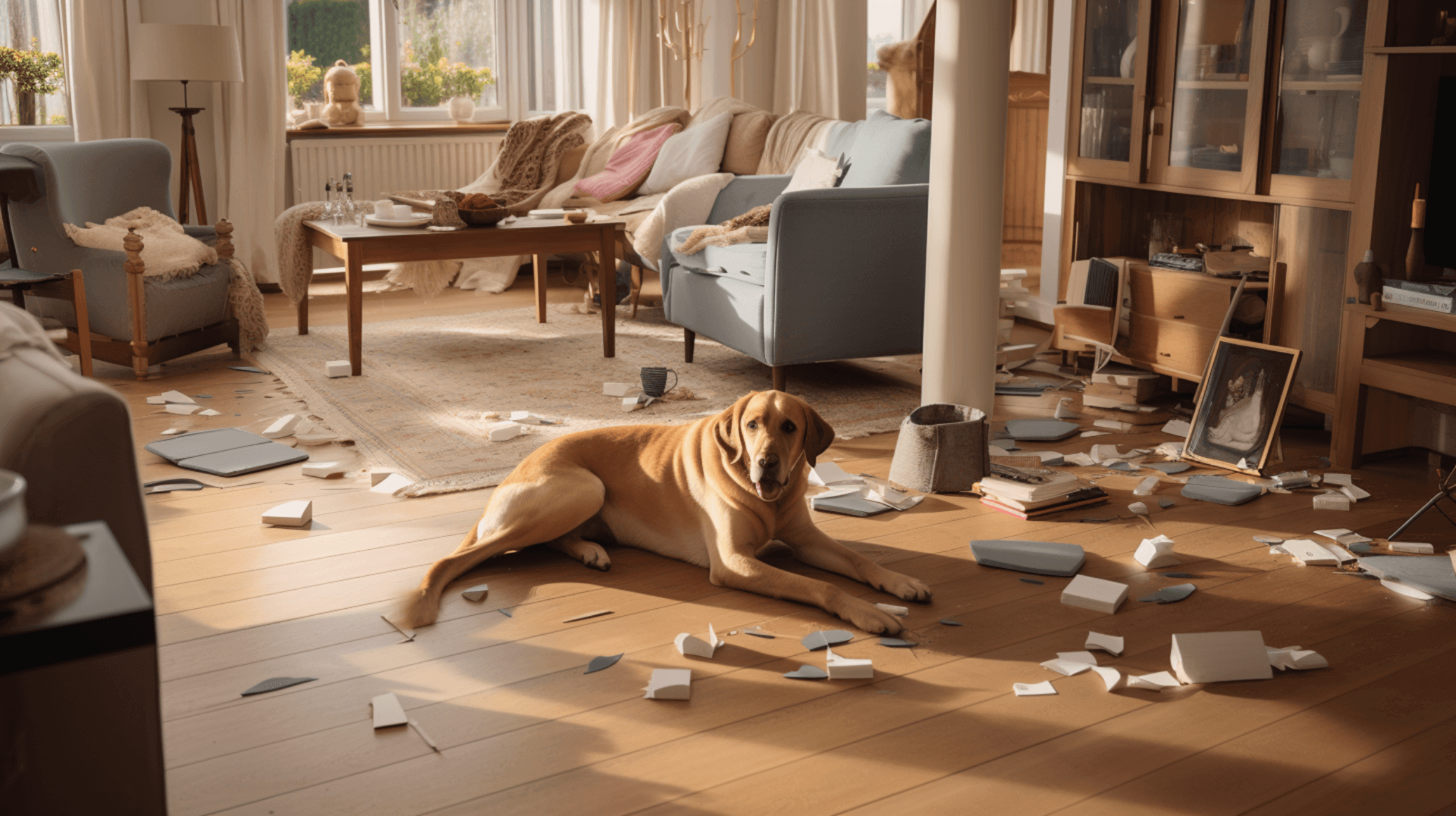
Repairing pet damage on wooden floors can be a challenging task, but with the right materials and techniques, it can be done effectively. Common methods for repairing pet damage include sanding, filling, and staining.
Sanding is the most common method for repairing minor scratches and scuffs on wooden floors. It involves using a sander to remove the damaged area and create a smooth surface. Before sanding, it is important to ensure that the timber joists are free from infestation and rot. Additionally, it is recommended to use a moisture meter with electromagnetic capability to measure the moisture content of the timbers. This can help detect the presence of internal decay in large-section timbers, especially where timbers, such as purlins and joist ends, enter walls.
Filling is another effective method for repairing pet damage on wooden floors. This involves using a wood filler to fill in the damaged area and create a seamless surface. It is important to choose a filler that matches the color and tone of the wood to ensure a cohesive appearance. Before applying the filler, it is recommended to carefully clean the damaged area and ensure it is free from any debris or loose particles.
Staining is often necessary to ensure that the repaired area blends seamlessly with the rest of the floor. Stains can help match the color and tone of the wood, making the repaired area less noticeable. It is important to choose a stain that closely matches the existing floor and to apply it evenly to achieve a consistent appearance.
By using these methods and techniques, you can effectively repair pet damage on your wooden floors and restore their appearance. It is important to assess the extent of the damage and choose the appropriate method based on the severity of the pet damage. Additionally, it is crucial to ensure the structural integrity of the floor and address any underlying issues, such as infestation or rot, to prevent further damage.
Regular Maintenance: Key to LongLasting Protection

Regular maintenance is key to ensuring the longevity and protection of your wooden floors. By following the best practices for cleaning and maintaining wooden floors, you can prevent future pet damage and keep your floors looking their best.
The best practices for cleaning and maintaining wooden floors include daily dry mopping with a properly treated dust mop, as well as sweeping up to three times per day. Using walk-off mats at all doorways is important to prevent dirt and debris from being tracked onto the floor. Promptly wiping up spills or any other moisture on the floor is crucial to prevent damage.
To prevent further damage, it is important to assess the condition of your floor’s foundation and address any underlying issues, such as infestation or rot. This includes inspecting the timber joists for signs of infestation and rot and measuring the moisture content of the timbers using a moisture meter with electromagnetic capability. Additionally, it is important to check the manufacturer’s technical information to ensure the material is suitable for use as UFI (Under Floor Insulation).
Regular maintenance can also help prevent future pet damage by allowing you to identify and address any issues promptly. By monitoring the floor for abnormal shrinkage and swelling and maintaining proper humidity levels and temperatures through the HVAC system, you can contribute to the overall health and durability of your wooden floors.
By regularly maintaining your wooden floors through proper cleaning, addressing underlying issues, and monitoring for potential problems, you can prevent future pet damage and ensure the long-lasting protection of your floors.
Furniture and Appliance Protection: Additional Measures

To protect your wooden floors from damage caused by furniture and appliances, it is important to take additional measures. One effective way is to use floor protectors and safety glides specifically designed for wooden floors. These products are designed to reduce friction and minimize the impact of heavy items on the floor.
When choosing floor protectors and safety glides, opt for high-quality options made of materials like felt, rubber, or plastic. Felt protectors are suitable for hardwood floors, while rubber and plastic protectors work well on tile and laminate floors. It is also advisable to use products specifically designed for white or bleached floors to prevent any discoloration or damage.
When moving heavy furniture and appliances, take precautions to prevent floor damage. Use furniture sliders to reduce friction and distribute weight evenly. Additionally, consider using a dolly or hand truck to move heavy items, ensuring they are properly balanced and secured.
Regular maintenance is also crucial for the longevity and protection of your wooden floors. Follow the best practices for cleaning and maintaining wooden floors, including daily dry mopping with a properly treated dust mop, sweeping up to three times per day for heavily used floors, and promptly wiping up spills or any other moisture on the floor.
By implementing these measures, you can effectively protect your wooden floors from potential damage caused by furniture and appliances, preserving their beauty and longevity.
Professional Services: When to Seek Help
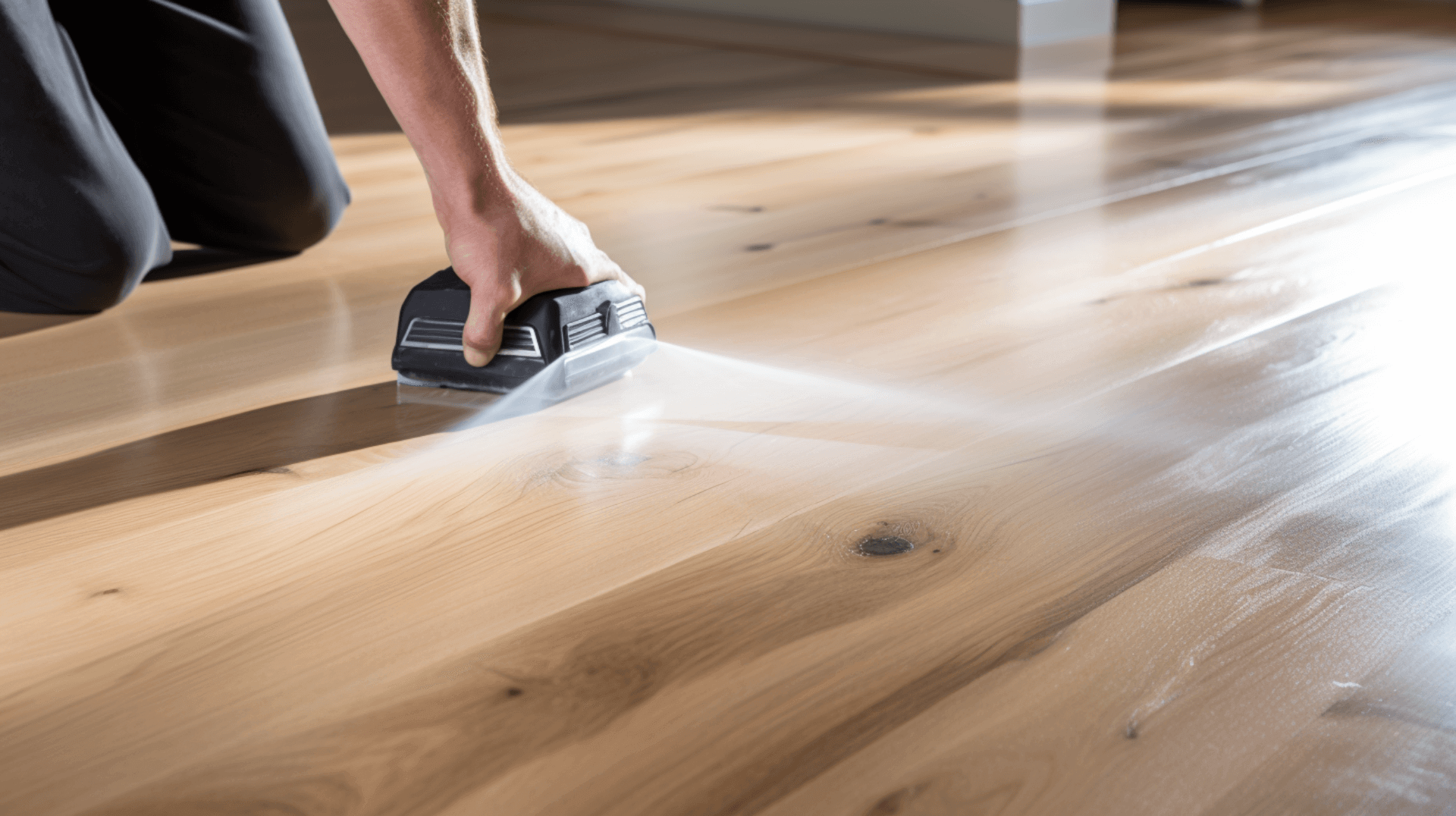
When it comes to protecting and repairing your wooden floors, it is important to consider professional services. Hiring a professional like GJP Floor Sanding can help ensure the longevity of your wooden floor and provide peace of mind.
Professional services offer a range of solutions, including floor sanding, staining, and sealing. Floor sanding is an effective method for repairing minor scratches and scuffs on wooden floors. Staining and sealing can help match the color and tone of the wood, while also providing protection against future damage.
In addition to these services, professionals can address underlying issues such as infestation or rot. We will inspect the timber joists for signs of infestation and rot and use a moisture meter with electromagnetic capability to measure the moisture content of the timbers. This ensures that the floor’s foundation is in good condition and meets the necessary standards, including compliance with national building regulations.
Professionals can also provide guidance on the best products and techniques for protecting and maintaining your wooden floors. They can recommend suitable materials for underfloor insulation (UFI) to achieve the required U-value in accordance with current building regulations. By checking the manufacturer’s technical information, professionals ensure that the chosen materials are suitable for use as UFI.
By hiring a professional, you can have confidence that your wooden floors are being properly protected and repaired. Professionals have the expertise and knowledge to assess the extent of the damage, address underlying issues, and ensure compliance with building regulations. They can provide tailored solutions to meet your specific needs and ensure the long-lasting protection of your wooden floors.
Expert Advice from GJP Floor Sanding
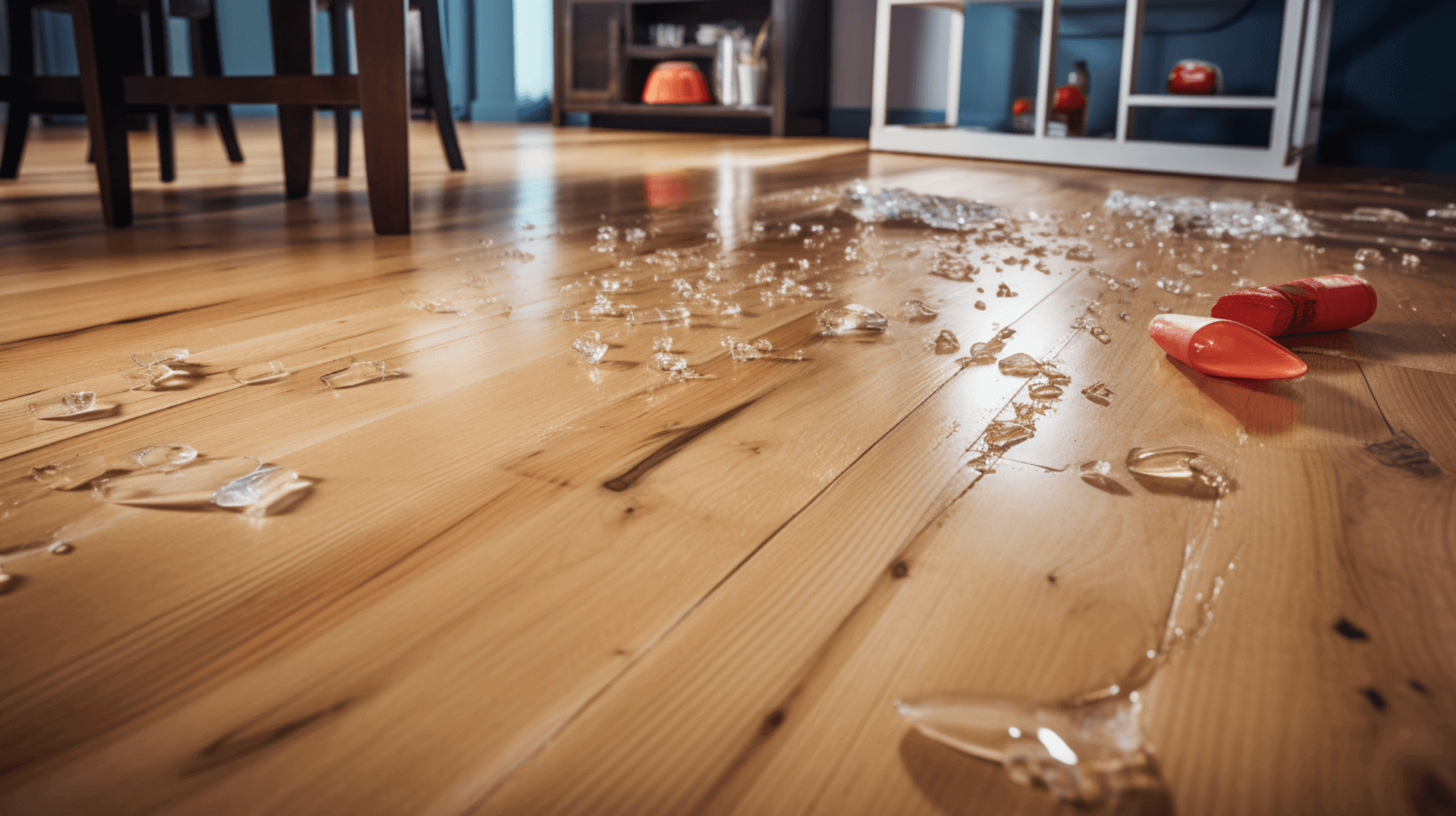
GJP Floor Sanding offers expert advice for protecting wooden floors from pet damage. With our expertise and knowledge, we can provide tailored solutions to meet your specific needs and ensure the long-lasting protection of your wooden floors.
GJP Floor Sanding can assess the extent of the damage and address underlying issues such as infestation or rot. We will inspect the timber joists for signs of infestation and rot, use a moisture meter with electromagnetic capability to measure the moisture content of the timbers, and investigate by probing with a sharp implement, like a bradawl. This thorough inspection ensures that the floor’s foundation is in good condition and meets the necessary standards, including compliance with national building regulations. We can also check for water or condensate pipes in the sub-floor voids, gas pipes, electrical wiring, flues, underfloor heating, damp-proof courses, condensation, and advise on repairs and safe systems of work.
In addition to addressing underlying issues, GJP Floor Sanding can provide guidance on the best products and techniques for protecting and maintaining your wooden floors. We can recommend suitable materials for underfloor insulation (UFI) to achieve the required U-value in accordance with current building regulations.
By seeking expert advice from GJP Floor Sanding, you can benefit from our comprehensive assessment of the floor’s condition and our knowledge of potential issues. We can guide you in choosing the right products and techniques to prevent pet damage and ensure the longevity of your wooden floors. Our expertise in addressing underlying issues, checking for potential hazards, and recommending suitable materials and techniques sets us apart in providing effective solutions for protecting your floors.
Contact Us: Get Your Wooden Floor Protected Today
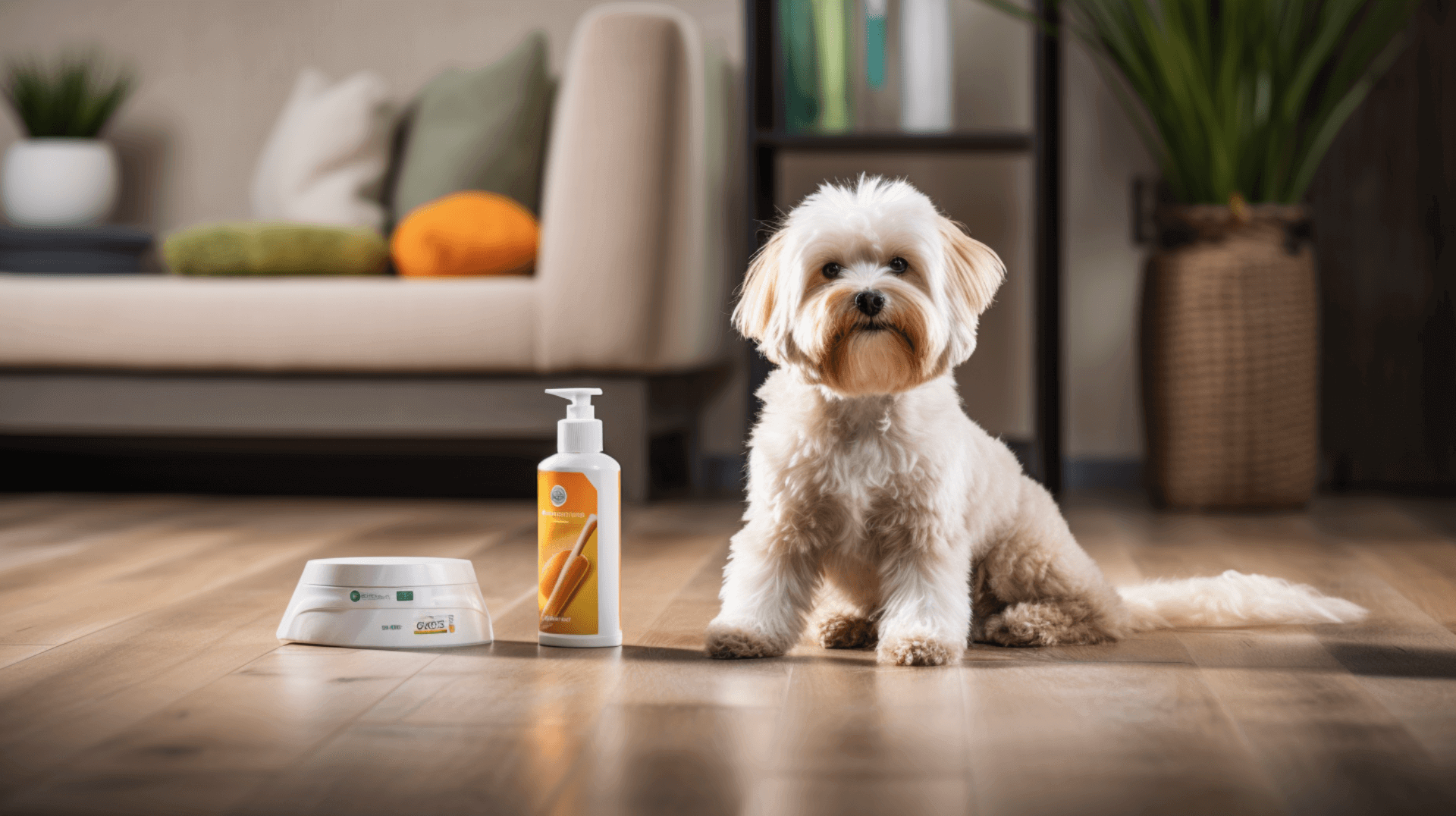
If you are looking for expert advice and tailored solutions for protecting and repairing your wooden floors, contact GJP Floor Sanding today. With our expertise and knowledge, we can provide a comprehensive assessment of the floor’s condition and address underlying issues such as infestation or rot. We will inspect the timber joists for signs of infestation and rot, use a moisture meter with electromagnetic capability to measure the moisture content of the timbers, and investigate by probing with a sharp implement, like a bradawl. This thorough inspection ensures that the floor’s foundation is in good condition and meets the necessary standards, including compliance with national building regulations. We can also check for water or condensate pipes in the sub-floor voids, gas pipes, electrical wiring, flues, underfloor heating, damp-proof courses, condensation, and advise on repairs and safe systems of work.
Before contacting GJP Floor Sanding, it is important to prepare the necessary information. This includes providing details about your wooden floor, such as the type of flooring, the age of the floor, the condition of the floor, and any existing damage. It is also important to mention any underlying issues that need to be addressed, such as infestation or rot. Additionally, providing information about the area to be covered, such as the size of the room and the type of furniture, can assist GJP Floor Sanding in understanding your specific needs.
By choosing GJP Floor Sanding for your wooden floor protection and repair needs, you can benefit from our comprehensive assessment of the floor’s condition, our ability to address underlying issues, and our guidance on the best products and techniques. Our expertise and knowledge ensure that your wooden floors are properly protected and repaired, preserving our beauty and longevity. Contact GJP Floor Sanding today to get the expert help you need.
